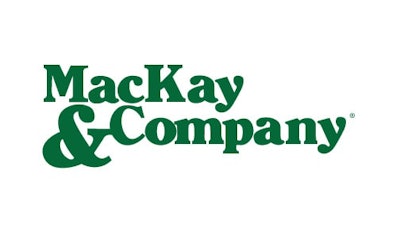
By Lynn Buck, MacKay & Company
One of the themes in last month’s Trucks, Parts, Service magazine was using data to find customers. I would like to take that one step further: Using data to find opportunities. The goal of finding customers after all is to gain parts sales and/or service opportunities. I would argue that simply looking at new customers is potentially limiting and that doing more for existing customers could be an easier sell that might be overlooked in the race for new customers.
Finding new customers: Opportunities to find new customers are plentiful, but effective resources at finding new customers are much less so. Historically, it involves buying lists and blindly soliciting to potential customers unaware of what their actual needs are. The method achieves a pretty low success rate, but the numbers game has been the go-to method for decades. Attending trade shows, sponsoring customer events or conducting training events might be more effective (depending on your business), but the number of customer “touches” will be smaller.
However, the opportunity to discuss customer issues directly and present potential solutions would likely have greater impact and higher potential to open the door for opportunities.
There are also a number of services that provide fleet data. Start off by analyzing your current customers’ fleet profiles — number of trucks and trailers, type of freight, length of haul, vocation, fleet age, predominant make, vehicle classes, fleet service shops and types of parts ordered from you. You can then use one of the fleet profile services and find other fleets that have similar profiles. Alternatively, if you find current customers fit a certain mold, develop a strategy to find a new customer fleet type and use the fleet profile tools to seek out those that match your desired criteria.
Finding new opportunities: Finding new opportunities with existing customers is the other way of increasing sales or service. For parts sales, examine sales history by customer. Develop customer profiles and compare purchases by customers with similar profiles. Analyze sales data for potential upsell of complementary parts. What are customers purchasing from you and what are the complementary parts for that component? Do they purchase brake drums, but not shoes and other hardware? These complementary parts should be an easy sell. If not, it could be a sign of “leakage” to a competitor.
As I wrote in a previous article, “Parts Kitting: Adding Value for Your Customer” in 2016, bundling parts for PMs or other jobs into a kit adds value and separates you from competitors. Ask customers about their pain points and how you can address them. Are their technicians spending too much time searching for parts for certain jobs? What about kitting those parts together, so the tech gets one SKU to manage?
Similar to parts, examine customer service history and develop customer profiles. Is the construction fleet down the road outsourcing its PMs to you? Maybe the other construction fleet you sold parts to would be open to that opportunity. You also may find patterns in the service data that could allow you to proactively send a service offer to a previous customer, such as a local fleet that is no longer coming in for PMs.
The data you already have at your fingertips contains valuable information for finding and retaining customers, as well as ways to grow sales and service opportunities. The stories are there, you simply need to look at the data to identify them.
Lynn Buck, information technology analyst, joined MacKay & Company in November 2012. His background includes more than 15 years of data analysis and reporting in a variety of settings. Most recently, he has performed the roles of pricing manager and inventory manager for two aftermarket parts distributors. Prior to that, he analyzed markets for new parts and service locations for Navistar.










